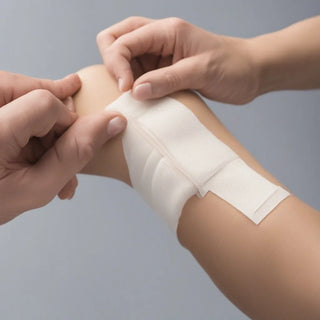Cuts, scrapes, burns and other minor traumatic wounds often happen unexpectedly. While serious injuries require emergency care, many acute wounds can be initially treated at home with proper first aid and follow-up. Taking steps to care for minor acute wounds helps prevent infection, reduce pain and discomfort, and promote healing.
Causes of Minor Acute Wounds
Some common causes of minor traumatic wounds include:
- Minor cuts from sharp objects like knives, glass, metal edges
- Scrapes and abrasions from falls on rough surfaces
- Small burns from household objects, hot liquids, surfaces
- Incision wounds from surgeries or dental procedures
These wounds are generally superficial and small in size, not deep or gaping.
First Aid for Minor Acute Wounds
- Stop bleeding by applying firm, direct pressure with a clean cloth or bandage for 5-10 minutes.
- Wash hands thoroughly before and after providing care.
- Gently cleanse the wound and surrounding skin with mild soap and water to remove debris.
- Apply an antibiotic ointment like bacitracin to prevent infection.
- Cover with a sterile adhesive bandage or gauze pad, securing edges.
- Elevate the injured area to minimize swelling.
Signs of Infection
Monitor the wound closely for signs of infection like:
- Increasing pain, swelling
- Redness, heat around the wound
- Green or yellow drainage
- Fever
See a doctor promptly if infection develops.
Caring for Wounds in the First Week
- Change dressings daily or when drainage saturates them.
- Watch for separation of wound edges or slow healing.
- Take over-the-counter pain medication as needed for discomfort.
- Keep the wound moist with ointment and covered.
- Avoid re-injury or trauma to the area.
See a Doctor If:
- Bleeding resumes after pressure is removed
- Wound shows no signs of healing after 5-7 days
- Infection develops
- Significant pain or limitation of function
Proper first aid and follow-up care helps acute wounds heal. Consult a doctor for wounds that worsen or fail to improve over time.
Disclaimer: This article is for general information only and is not medical advice. Seek assistance from a medical professional for any health concerns.
References
Gosain, A., & DiPietro, L. A. (2004). Aging and wound healing. World Journal of Surgery, 28(3), 321-326.
https://doi.org/10.1007/s00268-003-7397-6
Leaper, D. J., Schultz, G., Carville, K., Fletcher, J., Swanson, T., & Drake, R. (2012). Extending the TIME concept: What have we learned in the past 10 years? International Wound Journal, 9(S2), 1-19.
https://doi.org/10.1111/j.1742-481X.2012.01097.x
Nicks, B. A., Ayello, E. A., Woo, K., Nitzki-George, D., & Sibbald, R. G. (2010). Acute wound management: Revisiting the approach to assessment, irrigation, and closure considerations. International Journal of Emergency Medicine, 3(4), 399–407.
https://doi.org/10.1007/s12245-010-0217-5
Stay tuned for more insightful content on the role of nutrition in health and healing from Condition Directed Supplements.
